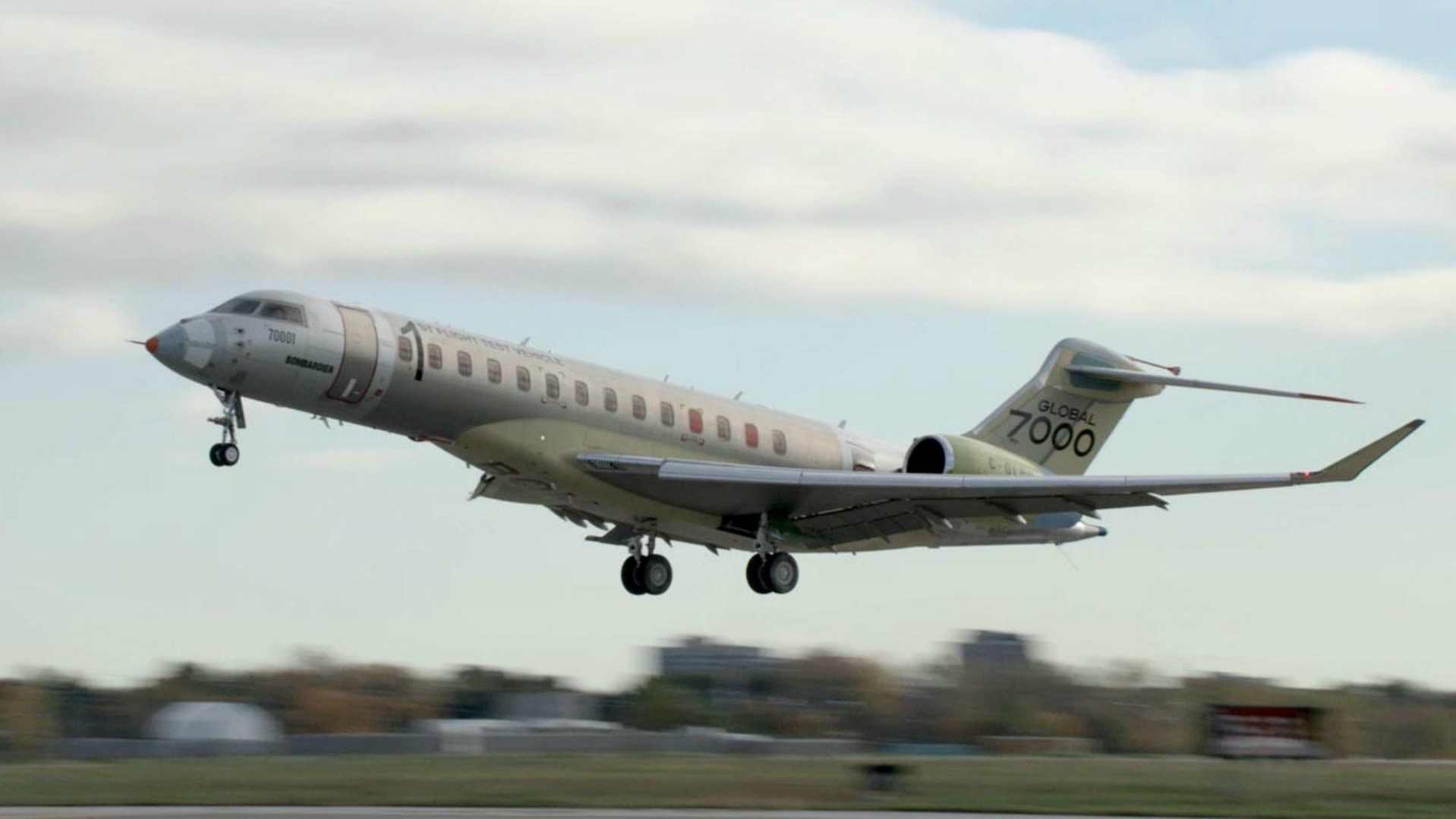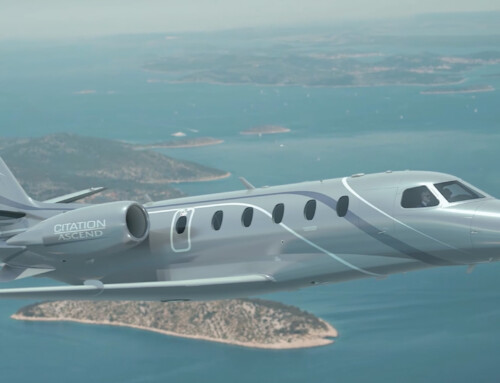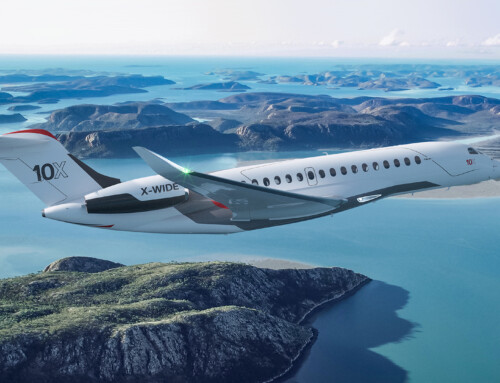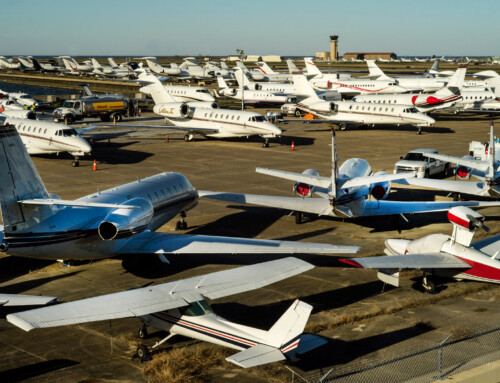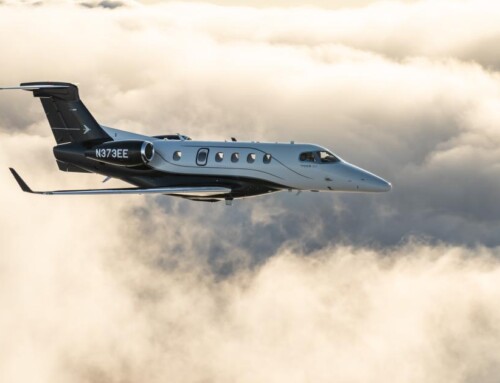Bombardier’s flagship Global 7000 felt the wind beneath its wings for the first time on November 4, completing a two-hour, 27-minute maiden flight from the company’s facility in Toronto. Under the control of captain Ed Grabman, copilot Jeff Karnes and flight-test engineer Jason Nickel, the aircraft departed at 10:25 a.m. local time on November 4, climbed to 20,000 feet and reached the planned test speed of 240 knots. During the flight the crew tested basic system functionality and assessed the handling and flying qualities.
The first Global 7000 flight nearly coincided with the 20th anniversary of the first flight of the original Global Express on Oct. 13, 1996. Michel Ouellette, senior v-p of the Global 7000/8000 program, called that anniversary “a huge milestone” that reflects on the successful path the original Global program established. “We’re walking into the next success with the Global 7000 and 8000,” he added.
“The first Global 7000 flight is the culmination of an incredible amount of knowledge and experience from our dedicated employees, partners and suppliers,” said Bombardier Business Aircraft president David Coleal. “This is a proud moment for Bombardier and confirms the Global 7000 aircraft program development is on schedule.”
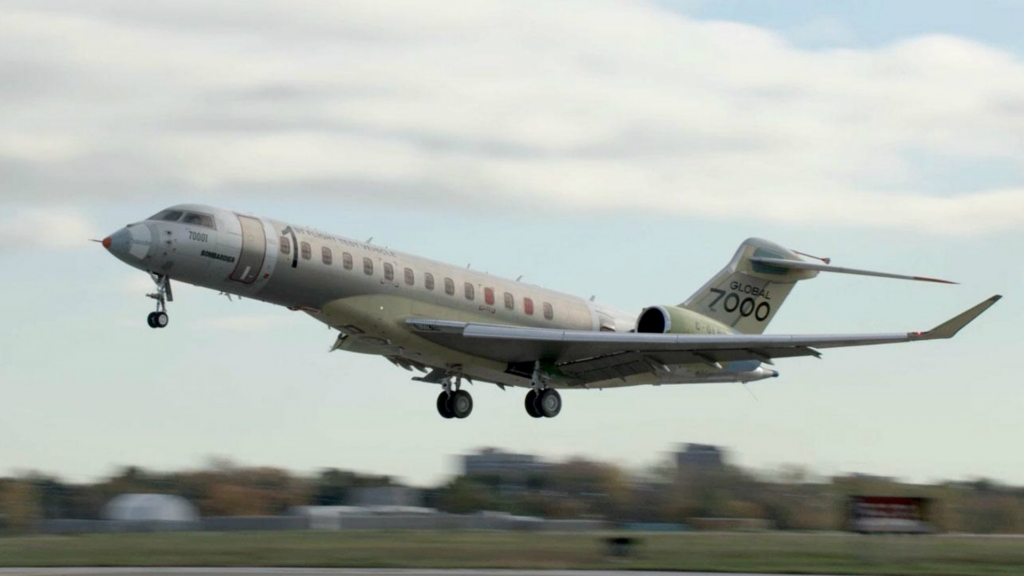
Global 7000
The Global 7000/8000 program is to become the crown jewel of the manufacturer’s business aircraft fleets. Bombardier has been taking an “all hands on deck” approach to getting the Global 7000, the first of the program, to market by the second half of 2018. Unveiled in 2010, the Global 7000 has suffered delays as Bombardier struggled to manage cash flow among several research and development programs in recent years. The 8000, meanwhile, is waiting in the wings while Bombardier works to get the Global 7000 to market.
“First flight is a major gate to continue building the program’s momentum, and will also trigger some much needed cash from deposits due from order holders,” said industry analyst Rolland Vincent.
But despite those cash flow issues Ouellette said there has been no compromise on the aircraft. With four distinct living spaces and a 54-foot, seven-inch-long cabin, the 7000 will be larger than any other Global (and any other purpose-built business jet, for that matter), something that Ouellette said makes it “segment defining.” It is also showing that it can meet the 7,400-nm range and a speed of Mach 0.925.
The $72.5 million jet has been a strong seller by all indications. Bombardier officials noted that the Global 7000/8000 program has contributed significantly to its backlog, which stood at $17 billion at midyear.
While Bombardier does not disclose orders, Vincent, who is president of Rolland Vincent Associates, estimates that Bombardier has accumulated orders for about two hundred Global 7000/8000s, the vast majority being for the Global 7000. “I am sure they are keeping theGlobal 8000 on their long-term radar, but the market has clearly spoken that cabin trumps range when we are out at these numbers,” he said, referring to the 8000’s shorter cabin but longer range. “The interior of the Global 7000 is pretty spectacular, and Bombardier has been demonstrating tremendous leadership in developing the cabins of the future. It has nicely leveraged its early-on experience with widebody Challengers to raise the bar in aircraft interiors.” He cautions, however, that competitors are “fast following.”
The Global 7000 customer base has held strong, even with the two-year delay in the program announced last year. Bombardier has continually kept customers informed about the progress of the program, shoring up their loyalty.
FLIGHT-TEST PROGRESS
The program is “progressing well,” Ouellette said. All safety-of-flight testing that led up to the first flight had been accomplished by mid-October. He noted the company had been methodical, ensuring complete ground testing to make sure that when the aircraft entered flight test, it would be “less in discovery mode and more in validation mode.”
Bombardier moved FTV1, which is testing basic performance, into a dedicated hangar that focuses strictly on “everything we need to do from an experimental point of view,” Ouellette said, adding, “It’s a highly instrumented
The program took a step forward this past spring when the GE Passport engine received certification. That also facilitated “going from discovery to validation,” he said, and “gives us strong confidence…as we go into flight-tests.”
In October, the Wichita-based flight-test team had been in Toronto, where the aircraft was assembled, to ease the handover into flight-test. Initial flights were to take place in Toronto, before the aircraft moved to Wichita to embark on the full flight-test program.
The flight-test program will use five aircraft. Ouellette emphasized that alongside FTV1 there has been “a lot of focus on subsequent FTVs.” In fact all remaining FTVs are in various stages of production. FTV2, which will be used for engine testing, is nearly complete, with engines and landing gear installed and the floorboards beginning to close. The aircraft has already had initial power on.
FTV3, which will be used for avionics/electrical checks, has the cockpit installed, fuselage and wings joined and landing gear installed. FTV4, which will primarily test the interior, is also in final assembly with the wing joined and the center fuselage received. FTV5 “is on its way,” added Ouellette. “It’s a full pipeline.”
Beyond the aircraft production, the company is taking special care to ensure that progress with the interiors matches the pace of the aircraft. With the 7000’s four-zone cabin, he said, the company has a “strong focus on this program to do things differently on the interior.”
Bombardier has received a complete shipset of furniture, which Ouellette stressed “is not a mockup. It’s a real one that passed flammability so it can fly.” The components will undergo testing in a rig specifically designed to represent the aluminum fuselage of the 7000. “We reinvented the way we do this,” he said. The cabinets will be installed for form, fit and function testing, including for natural movement and deflections of the fuselage. “Once that’s done and we’ve ironed out all the bugs, we can take that shipset and put it into FTV4 and go fly. The only thing we can’t simulate on the ground is flying.”
This testing is particularly important to ensure that the Global 7000 program remains on track for its timeline, he said, noting that Bombardier has folded “a lot of innovation into this. To meet the second half of 2018, lessons learned on the completion side have shown us that we want to do this a year ahead.”
While the Global 7000 assembled in Toronto, the aircraft will be completed at Bombardier’s center in Montreal that outfits other Globals and Challengers. Executives say they will share more detailed plans for support and maintainability as the flight-test program matures, but they have hinted that maintenance intervals will be longer than anything reached with current-production aircraft.
Source: Ain Online

 Hawker-Beechcraft Hawker 400XP
Hawker-Beechcraft Hawker 400XP Cessna Citation V
Cessna Citation V Beechcraft Premier IA
Beechcraft Premier IA Beechcraft King Air 350
Beechcraft King Air 350



